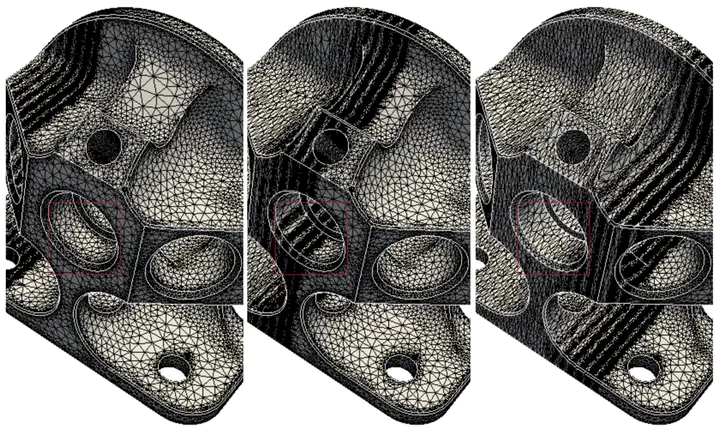A co-design approach of irregular kernels on manycore architectures : case of multi-scale anisotropic remeshing in computational fluid dynamics

Abstract
Numerical simulations of complex flows such as turbulence or shockwave propagation often require a huge computational time to achieve an industrial accuracy level. To speedup these simulations, two alternatives may be combined : mesh adaptation to reduce the number of required points on one hand, and parallel processing to absorb the computation workload on the other hand. However efficiently porting adaptive kernels on massively parallel architectures is far from being trivial. Indeed each task related to a local vicintiy need to be propagated, and it may induce new conflictual tasks though. Furthermore, these tasks are characterized by a low arithmetic intensity and a low reuse rate of already cached data. Besides, new kind of accelerators have arised in high performance computing landscape, involving a number of algorithmic constraints. In a context of electrical power consumption reduction, they are characterized by numerous underclocked cores and a deep hierarchy memory involving asymmetric expensive memory accesses. Therefore, kernels must expose a high degree of concurrency and high cached-data reuse rate to maintain an optimal core efficiency. The real issue is how to structure these data-driven and data-intensive kernels to match these constraints ?In this work, we provide an approach which conciliates both locality constraints and convergence in terms of mesh error and quality. More than a parallelization, it relies on redesign of kernels guided by hardware constraints while preserving accuracy. In fact, we devise a set of locality-aware kernels for anisotropic adaptation of triangulated differential manifold, as well as a lock-free and massively multithread parallelization of irregular kernels. Although being complementary, those axes come from distinct research themes mixing informatics and applied mathematics. Here, we aim to show that our devised schemes are as efficient as the state-of-the-art for both axes.